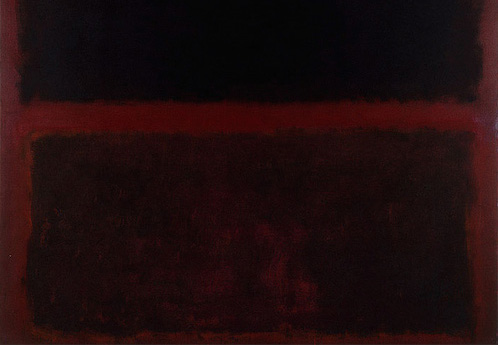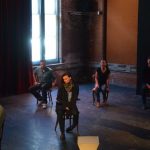Director: Joel Ivany
Conductor: Robert Cooper
Pianist: Jenna Douglas
Soprano Soloist: Ambur Braid
Alto Soloist: Rihab Chaieb
Tenor Soloist: Chris Enns
Bass Soloist: Aaron Durand
Soprano Chorus: Meher Pavri
Alto Chorus: Danielle MacMillan
Tenor Chorus: Joshua Wales
Bass Chorus: James Michael Baldwin
Of all the vast mythology surrounding the work of Western music’s arguably most mythologized composer, the mystique of Mozart’s Requiem in D Minor is surely among the most insistent. Commissioned by enthusiastic amateur musician and nobleman Franz Count von Walsegg in 1791, the memorial mass was first performed, not in memory of his wife as intended, but at a benefit concert for Mozart’s widow, Constanze, a full two years later. The precise progress of the piece through history and how it came to be completed is likely to remain a mystery. Mozart had passed away several months before he could apply the finishing touches to his manuscript. Constanze, Wolfgang’s ersatz business manager, was the first to invoke the name of her husband’s devoted student, Franz Xavier Süssmayr, insisting Mozart had dictated final detailed instructions on his deathbed. The evidence, largely circumstantial, often contradictory, is far from conclusive. Yet completed it was, Mozart’s forged signature prominently affixed, and although vaguely evidencing the contributions of a less-skilled hand in places, the Requiem endures, a monument of human endeavour.
In a forceful, theatrically aligned rendering of Mozart’s masterwork, director Joel Ivany, founder of Toronto’s innovative Against the Grain Theatre, unveiled an intensely personalized Requiem in a one-time workshop performance at the Canadian Stage Company’s versatile Rehearsal Hall. The shattering, acutely emotional result often proved as difficult to witness as it was spell-binding. The sense of shared experience among the captivated 60-member audience was palpable, a Requiem vividly experienced in the first person.
Addressing his audience before the uninterrupted 60-minute performance, Ivany spoke of his desire to build community with his production. The need to find a clear, direct route to the centre of the Requiem’s sombre message irrespective of religion and culture coupled with the urgency of finding meaningful, compassionate responses to victims of violence were clearly at the forefront of the director’s mind. The classic groundbreaking study On Death and Dying by psychologist Elizabeth Kubler-Ross primed his approach, he explained.
Observing the reactions of patients to the loss of loved ones, Kubler-Ross identified five stages to bereavement — Denial, Anger, Bargaining, Depression, Acceptance. Grief and grieving was viewed as a process, one in which differing aspects of suffering may or may not be asserted in fixed order or as isolated feelings. Whether the assessment, first published over four decades ago, continues to represent a valid clinical model is an issue only a professional can address. From a reviewer’s point of view, however, there is no question of its effectiveness as a context for accessing the stark theatrical values inherent in Mozart’s composition.
Ultimately, the greatness of the Requiem, as in so much of Mozart’s later music, lies in his genius for synthesizing all the forms, colours and textures that he had depicted on the concert stage and, more pointedly in the case of Ivany’s presentation, in the opera house during his lifetime. There is, of course, an intense sense of drama implicit in the liturgy of the Requiem Mass but Mozart hyper-intensifies the message with melodies and harmonies that far transcend the text. Ivany gave the process an added third dimension.
With his fine compact cast of four soloists plus an equal number of choristers distributed across a blank playing area, the Requiem took on graphic expression. Summoning mime and gesture, singer actors not so much personified specific phases of mourning as defined by Kubler-Ross, but rather, singly and in supportive ensembles, evoked a resonant emotional diorama. The approach proved to be a sound one, literally and metaphorically. The commitment and artistry of this polished troupe of singers was unwavering.
Like opera, the Requiem works on multiple levels, often simultaneously. Story-telling and poetry, reason and emotion, intellect and instinct all swirl and blend into an experience of great humanity. The surging physicality of Ivany’s production — a chair overturned, slumped bodies, tight embraces — felt particularly well-suited to the energy and rhythm of Mozart’s turbulent work, particularly the Requiem’s anguished central section. From the hopefulness of Tuba mirum (“The trumpet will sound”) to the desperation of the Recordare (“Remember”) to the profound sorrow of Lacrimosa dies illa (“That day of tears and mourning”), performers physically and vocally channeled the full force of passion and prayer streaming from the score. Reinforced by intense periods of tangible entr’acte silence, Ivany’s direction struck straight to the heart. This was a Requiem of haunting power, raw and unadorned.
January 2016 will see Ivany and Mozart’s Requiem rejoined at Toronto’s 2000-seat Roy Thompson Hall. Partnered by the resident Toronto Symphony Orchestra and the combined mass force of the Amadeus Choir and Elmer Iseler Singers, the 3-night series of epic-scale concerts promises to be a highlight of the New Year. Last week’s intimate workshop presentation, while clearly a work in progress, lacking a compelling final image, still somewhat rough around the edges, yielded tantalizing clues to what very well may lie ahead.




